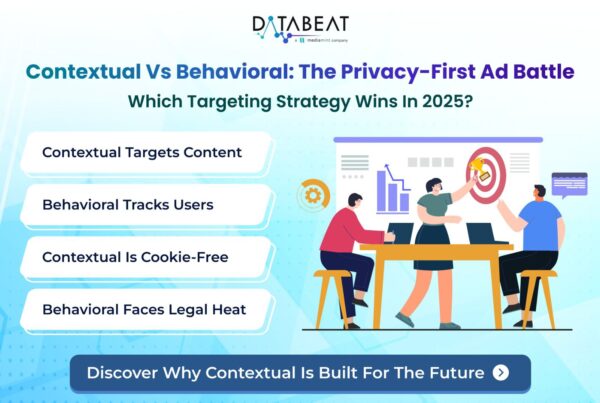
In digital advertising, contextual targeting is making life better for both publishers and advertisers. With privacy concerns and the end of third-party cookies, advertisers are looking at contextual targeting as a smarter, privacy-friendly way to reach their audience. Contextual targeting places ads in the right spot, so they are seen by users who are already interested in similar content.
What is Contextual Targeting?
Contextual targeting is about showing ads based on the website’s content a user is currently viewing. Instead of targeting ads based on a user’s cookies, it looks at the keywords or category of the page. For example, if someone is reading a blog post about healthy eating, they might see an ad for organic food or fitness equipment.
How Does Contextual Advertising Work?
Contextual targeting uses advanced technology like natural language processing (NLP) and machine learning to scan webpage content. It picks out keywords and topics to understand the page’s content and then sends this info to SSPs (Supply-Side Platforms) and DSPs (Demand-Side Platforms). Based on this information, a relevant ad is chosen and shown on the page.
Here’s How it Works:
- Analyze the Page: The system examines the words, images, and metadata on the page.
- Match the Context: It determines the page’s content, like if it’s about food, travel, or sports.
- Pass Information: This info is sent to SSPs and DSPs.
- Place the Ad: Based on the shared details, the right ad is selected and displayed on the page.
Why Contextual Targeting Ads Works so Well ?
- Privacy-Friendly: With privacy laws like GDPR and CCPA, and the end of third-party cookies, brands need ways to advertise without using personal data. Contextual targeting doesn’t track users’ data. It will show the ads based on the content of the page making it privacy-friendly.
- Higher Engagement: When ads match what users are already reading or viewing, they feel more natural and less interruption. For example, if someone is reading about football, they are more likely to click on an ad for sports gear. This is why contextual ads get more clicks.
- Brand Safety: Contextual targeting lets brands control where their ads appear. By setting the right options, advertisers can make sure their ads don’t show up next to controversial or inappropriate content, protecting their brand’s image.
- Better User Experience: Since contextual ads are relevant to what users are interested in, they feel less like an intrusion. This makes for a smoother experience for users.
- Future-Proof: As third-party cookies are phased out, advertisers are worried about how to reach their audience. Contextual targeting is a reliable solution for a future without cookies because it doesn’t rely on tracking users across websites. It focuses on matching ads with the content users are already viewing.
Guide to Contextual Targeting for Advertising
- Use the Right Keywords: Choose keywords that match your products or services and the interests of your audience. Also, use negative keywords to prevent your ads from showing irrelevant or harmful content.
- Content Categorize: Publishers should categorize the inventory into a set of categories. For example, if it’s a sports site. They can categorize the inventory into type of sports pages like Cricket, Football, Badminton..etc. Inventory category will help the system to understand the content easily and accurately.
- Keep Testing: More testing will help us to find better ways to target the audience. Track how your contextual ads perform and make changes as needed. This might involve adjusting your keywords, changing your bid strategy.
Future of Contextual Targeting:
As machine learning and AI get better, contextual targeting will become more accurate. We’ll see smarter algorithms that understand web page content better, leading to more relevant ads. With growing privacy concerns, brands will increasingly use contextual targeting to connect with people in a more respectful and engaging way.
Conclusion
Displaying ads based on the website’s content a user is currently viewing. Instead of targeting ads based on a user’s cookies, it looks at the keywords or category of the page. For example, if someone is reading a blog post about healthy eating, they might see an ad for organic food or fitness equipment. This keeps ads private and respectful of users. It also means ads are more interesting and less annoying for people. As cookies are going away, contextual targeting is a smart way for ads to stay useful. By picking the right keywords, sorting content properly, and testing different approaches, ads can be even better. With better technology in the future, this method will get even smarter and more helpful
How can Databeat Help?
Databeat can help to set up implementing the contextual targeted ads (Display & Video) for publishers and strategize better to yield good revenue. We can also help by trying A/B tests to see how contextual targeting ads are performing for publishers. Databeat can support publishers, whether existing or new to the industry, by evaluating performance.









